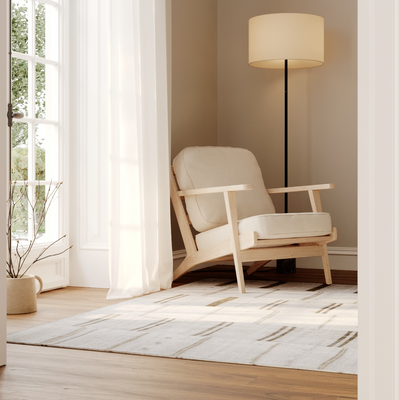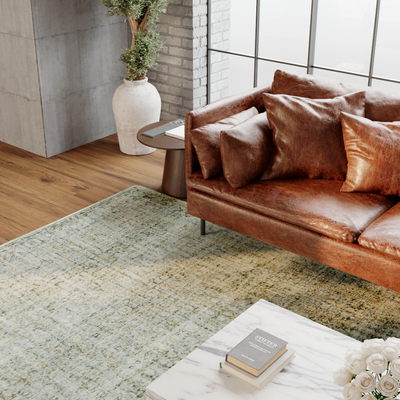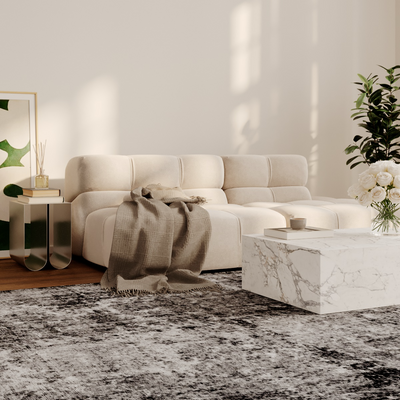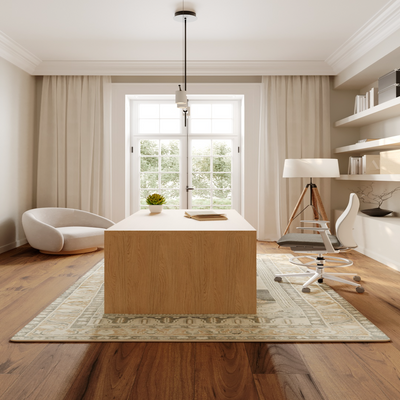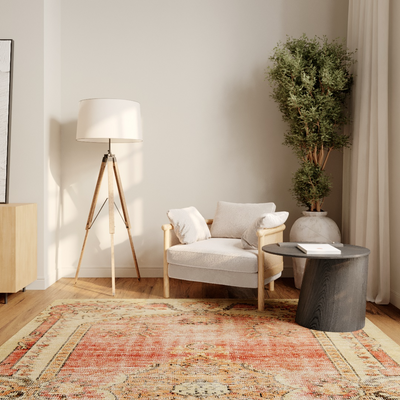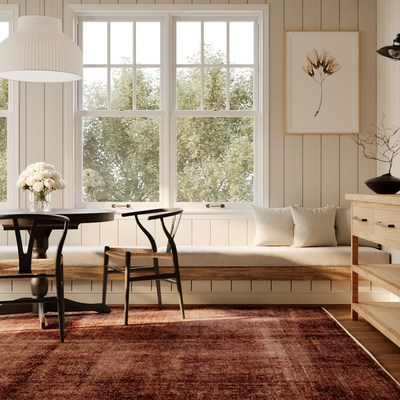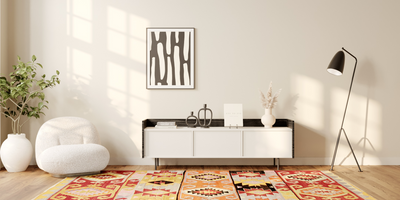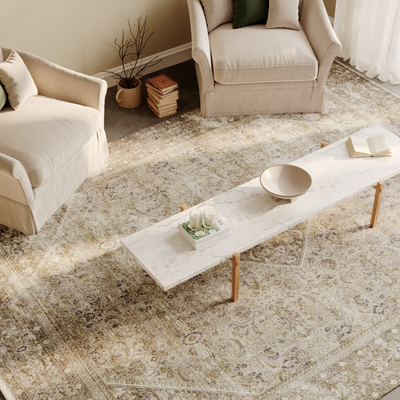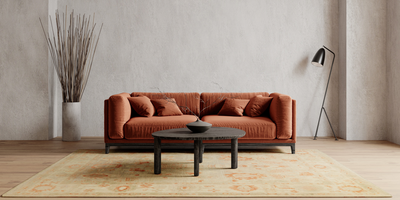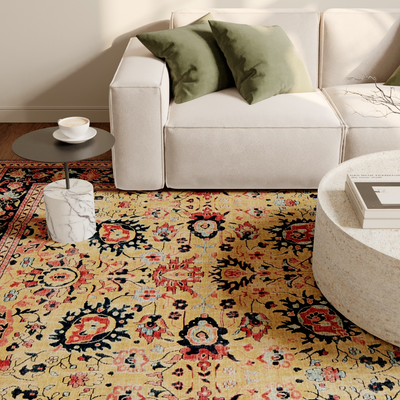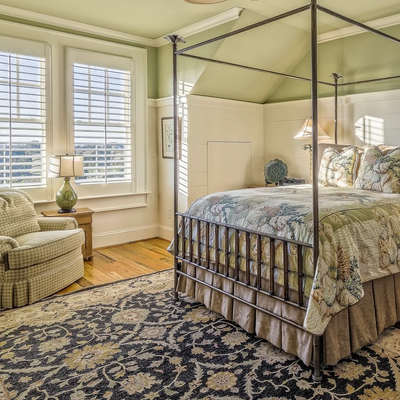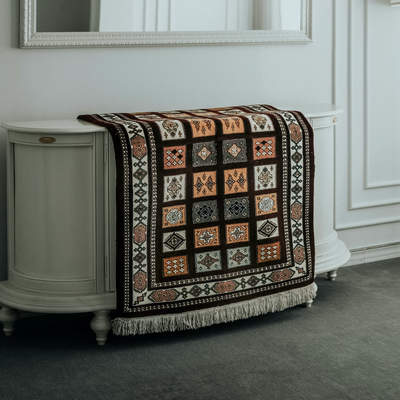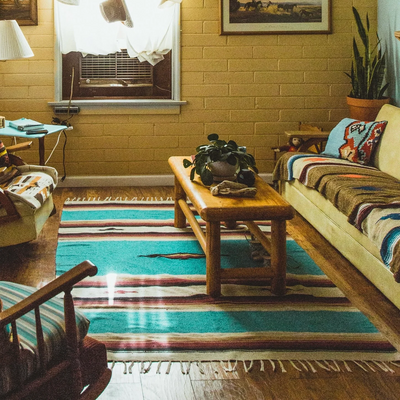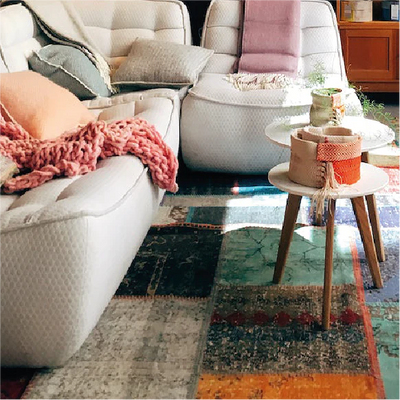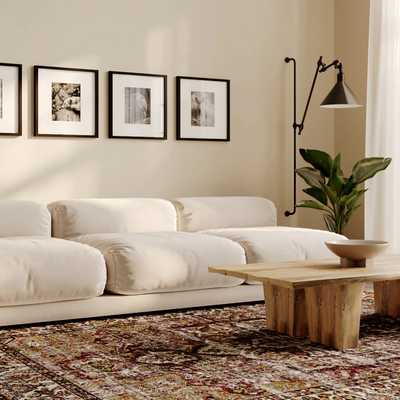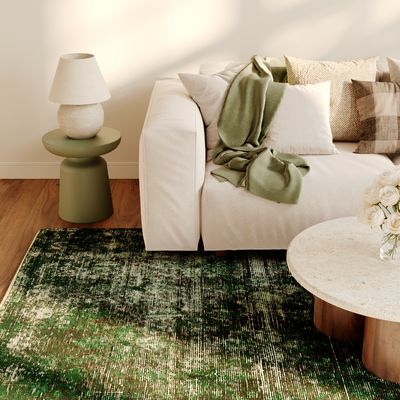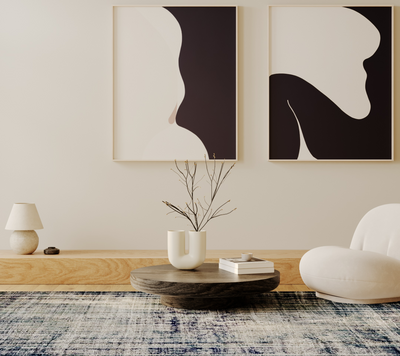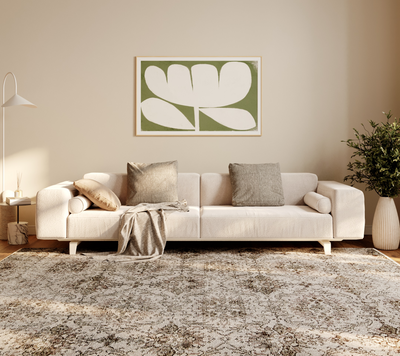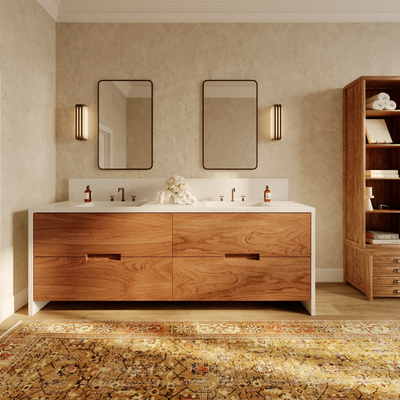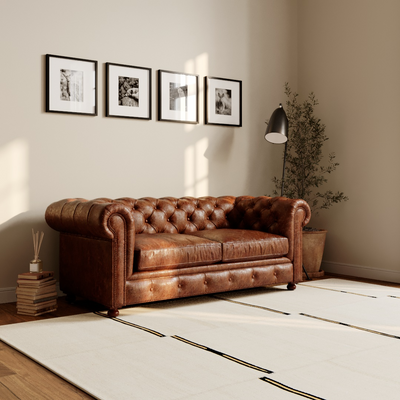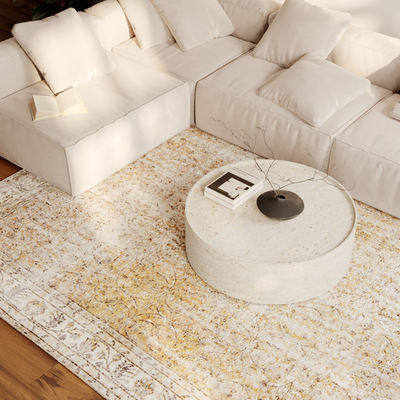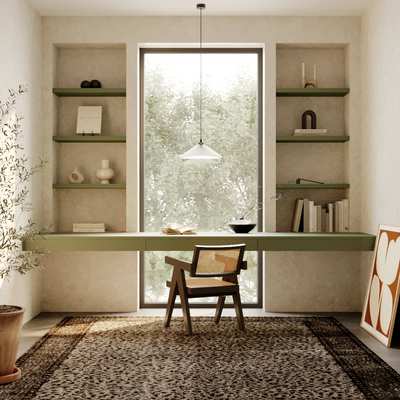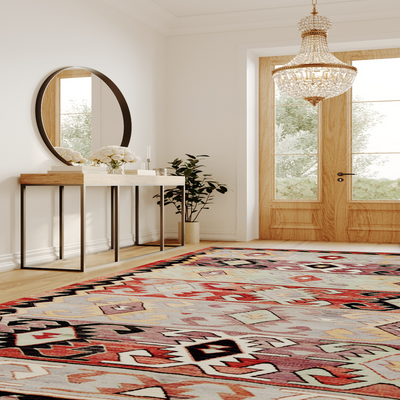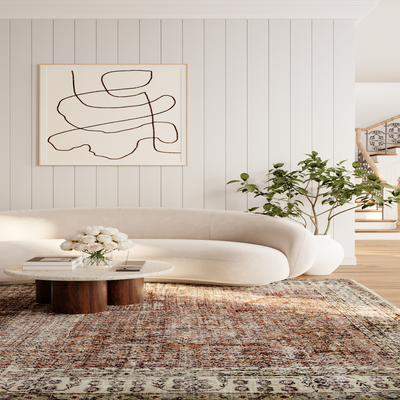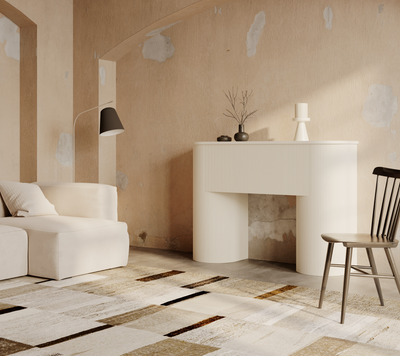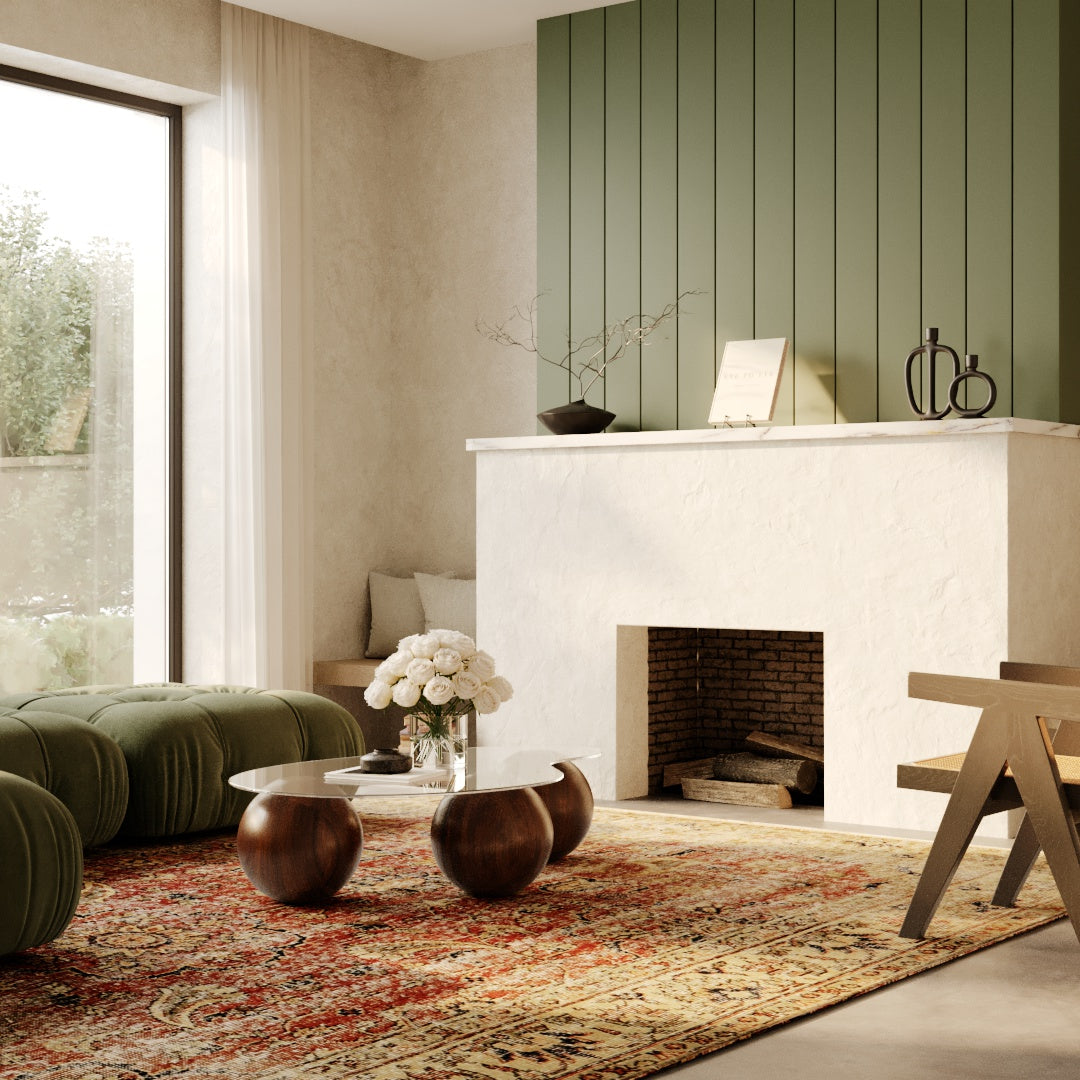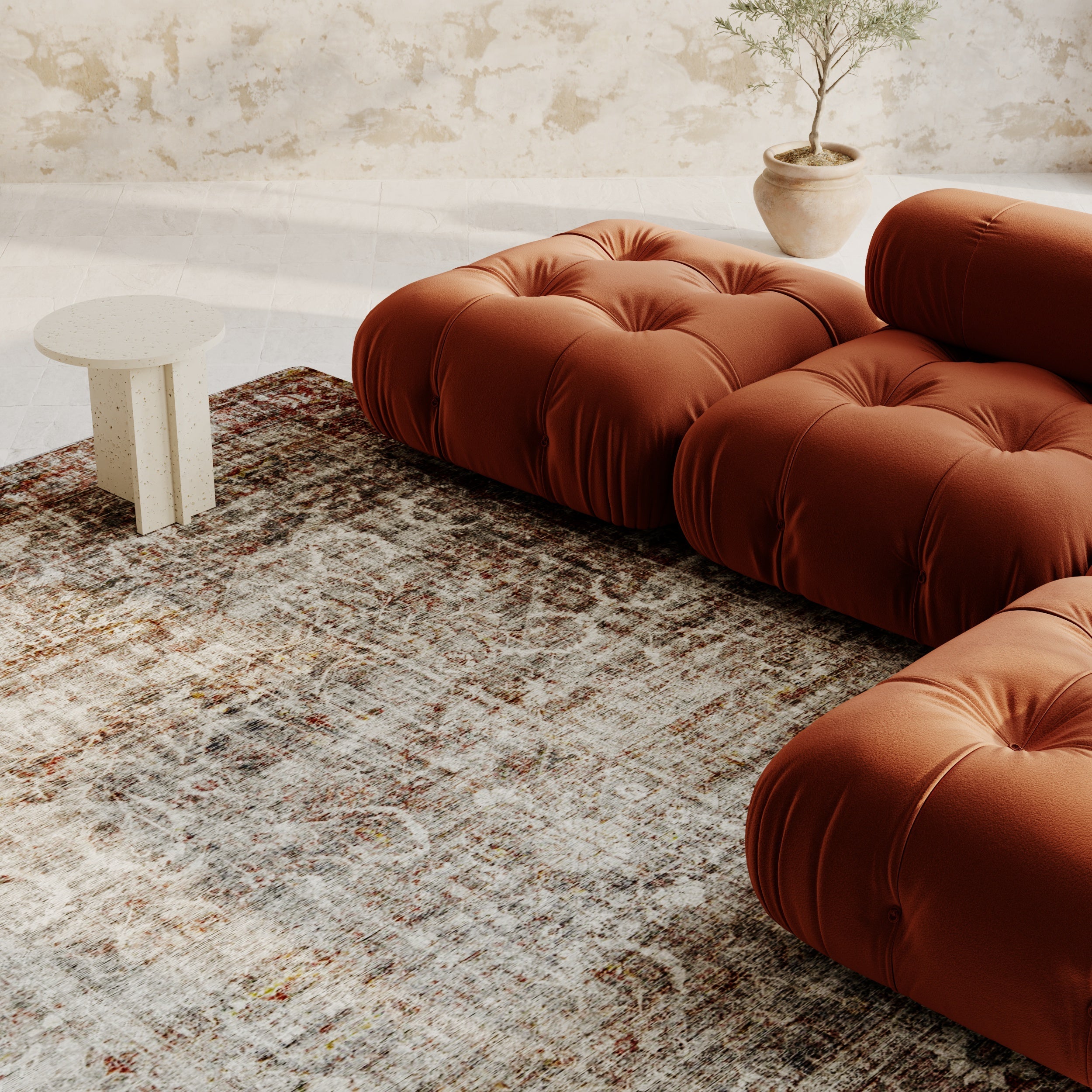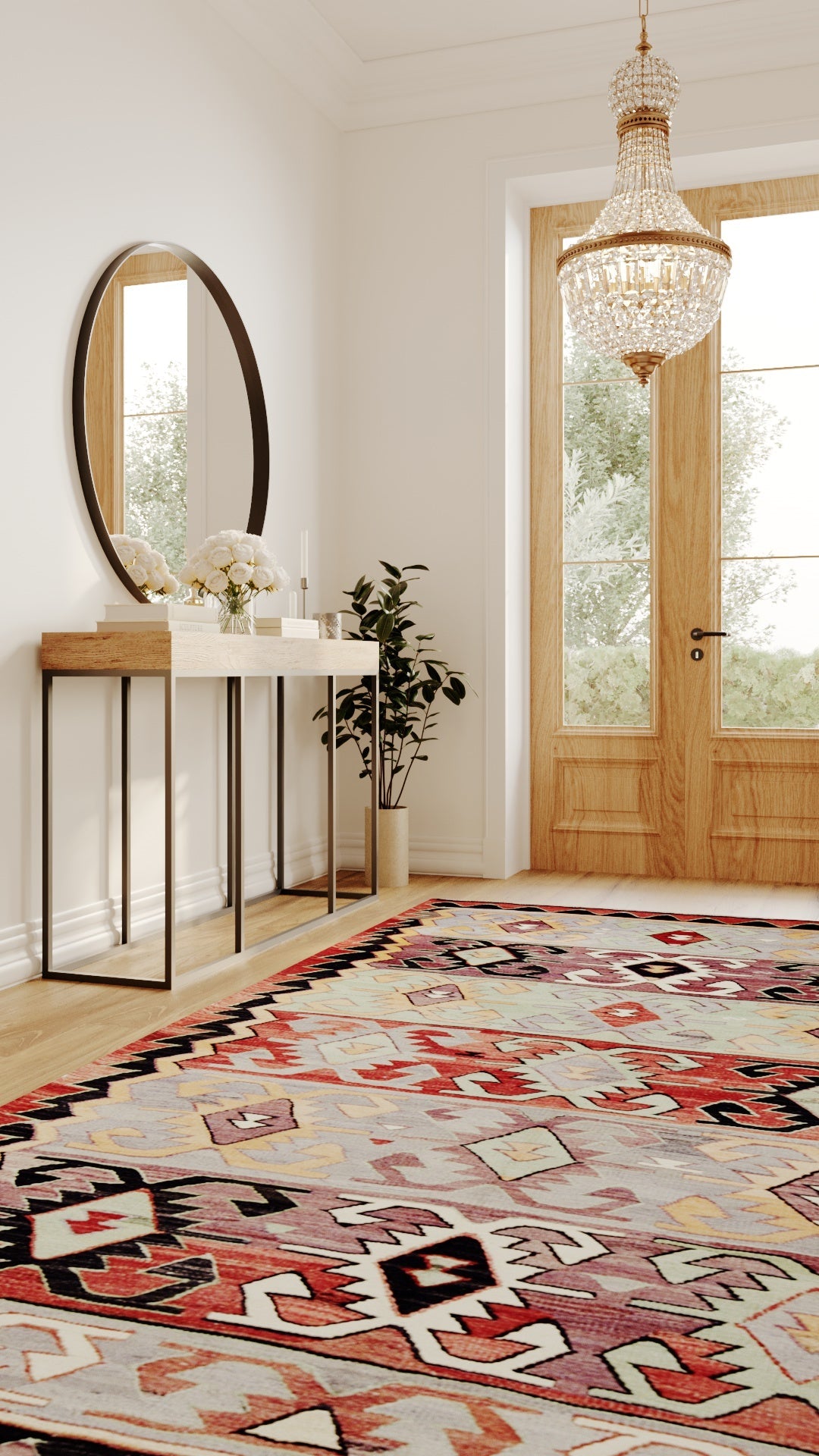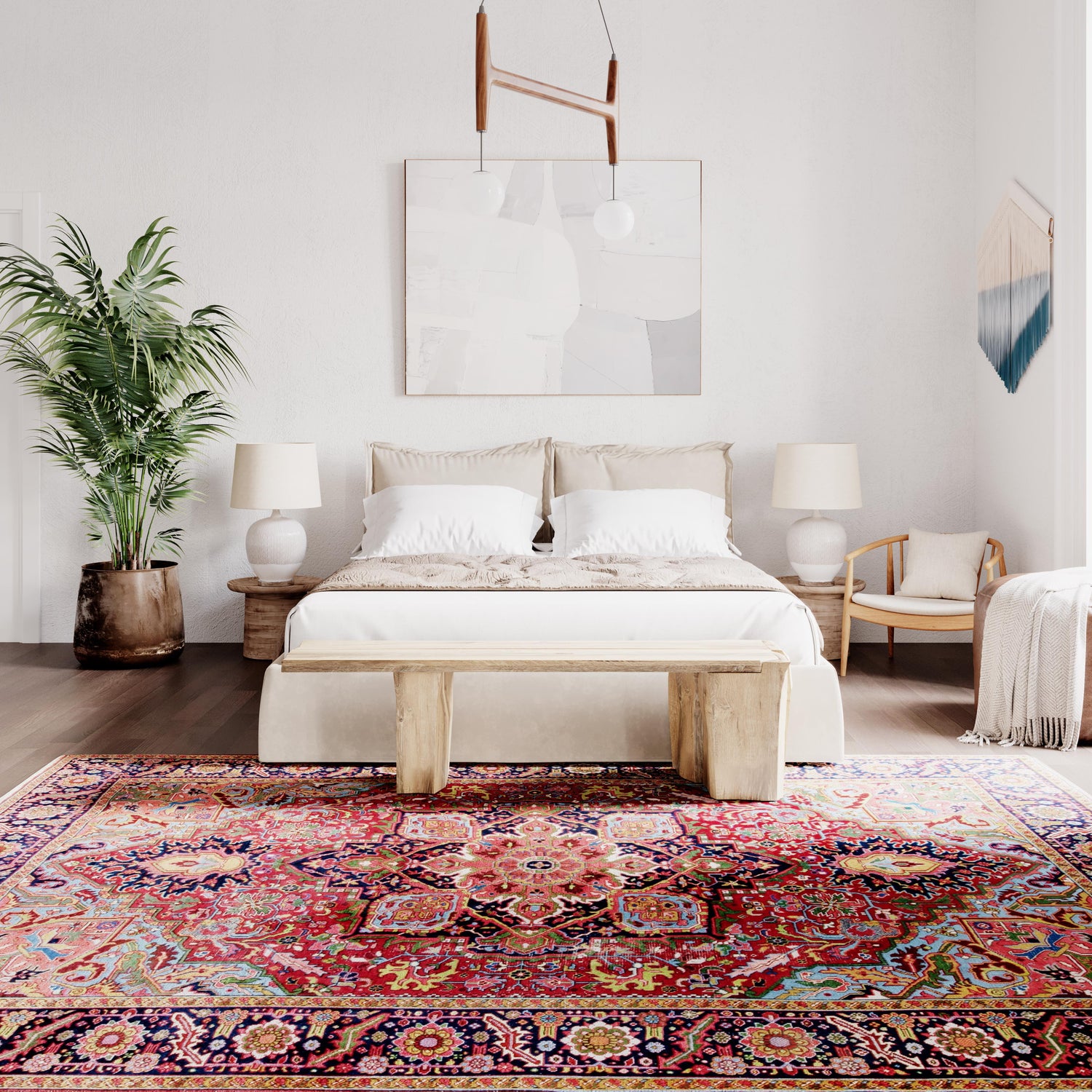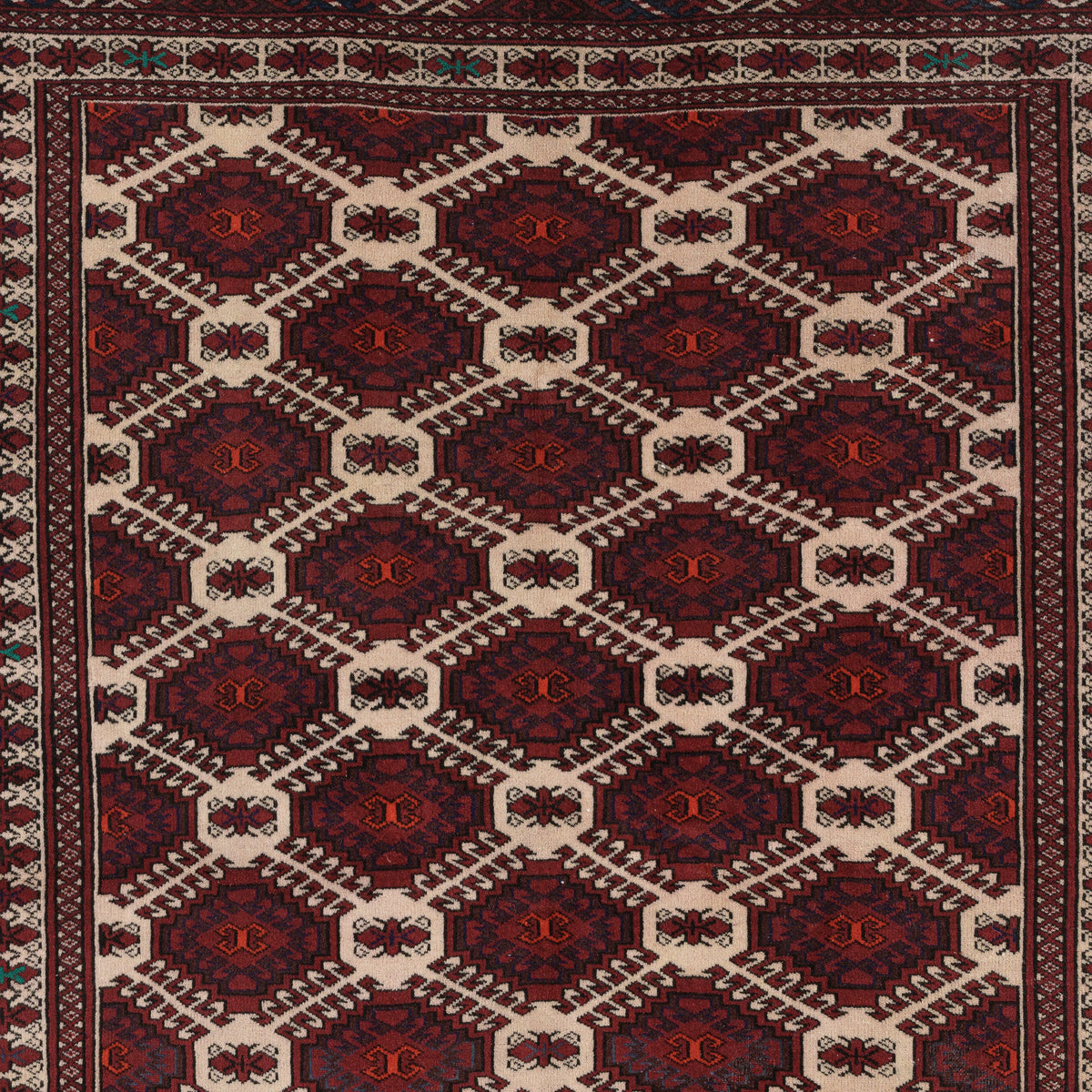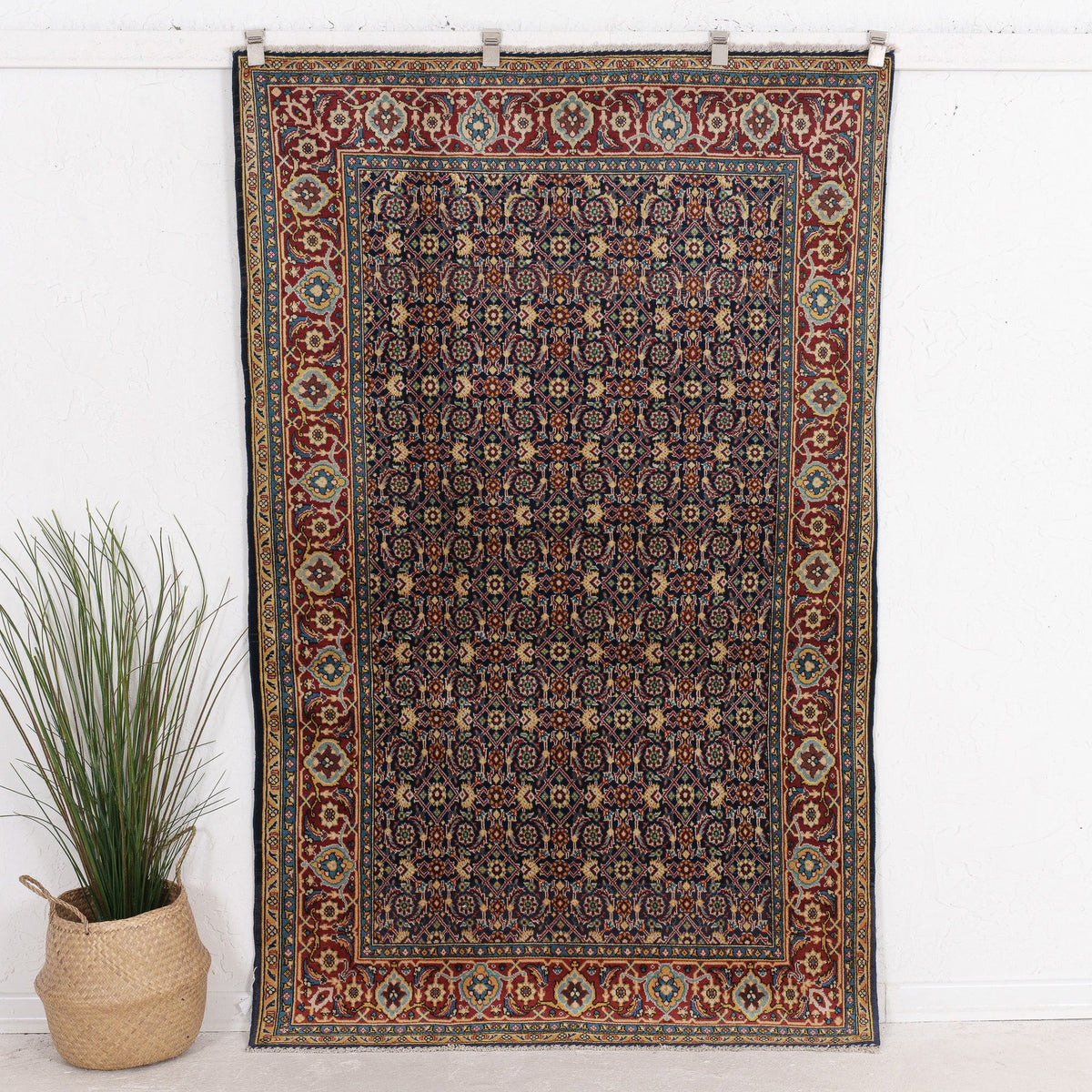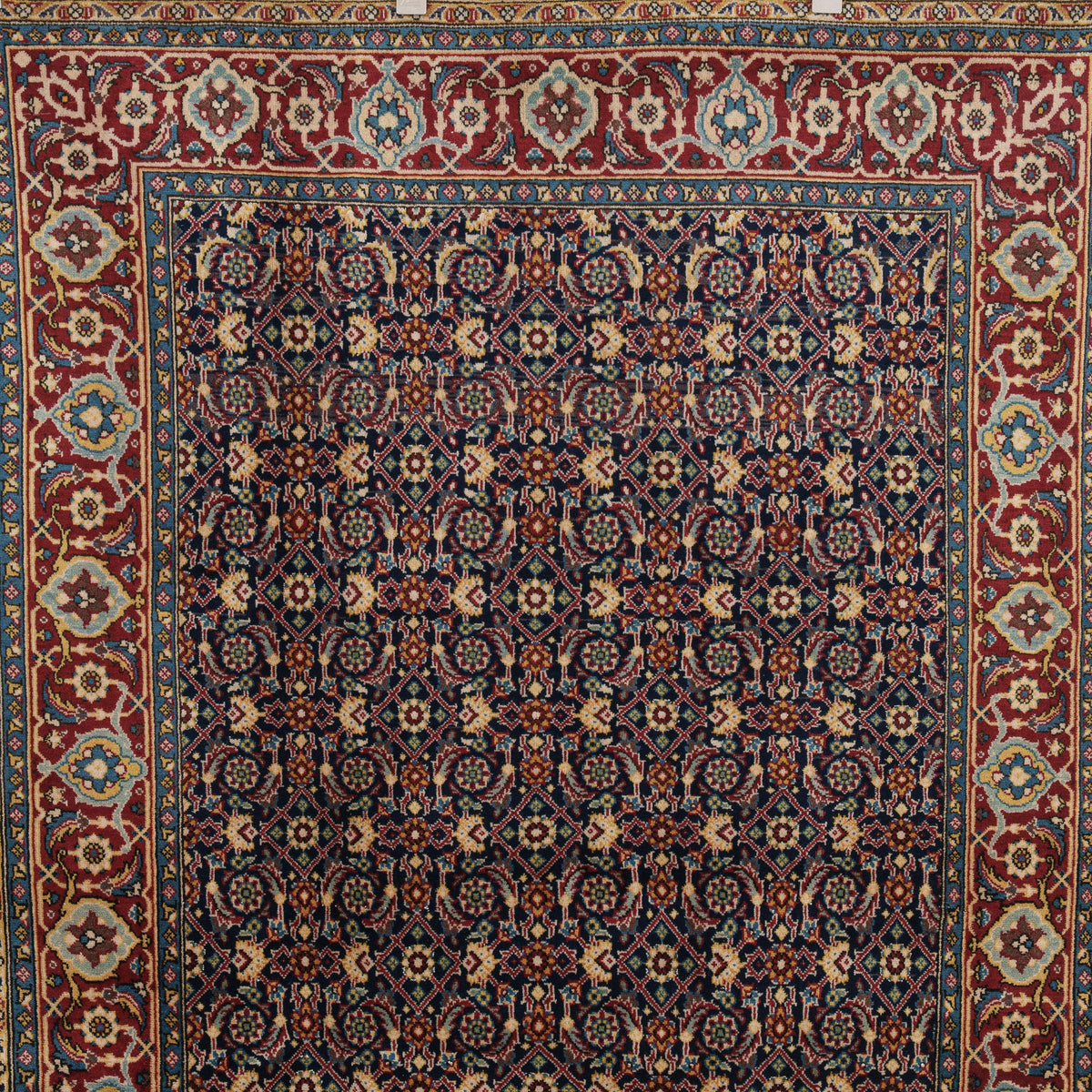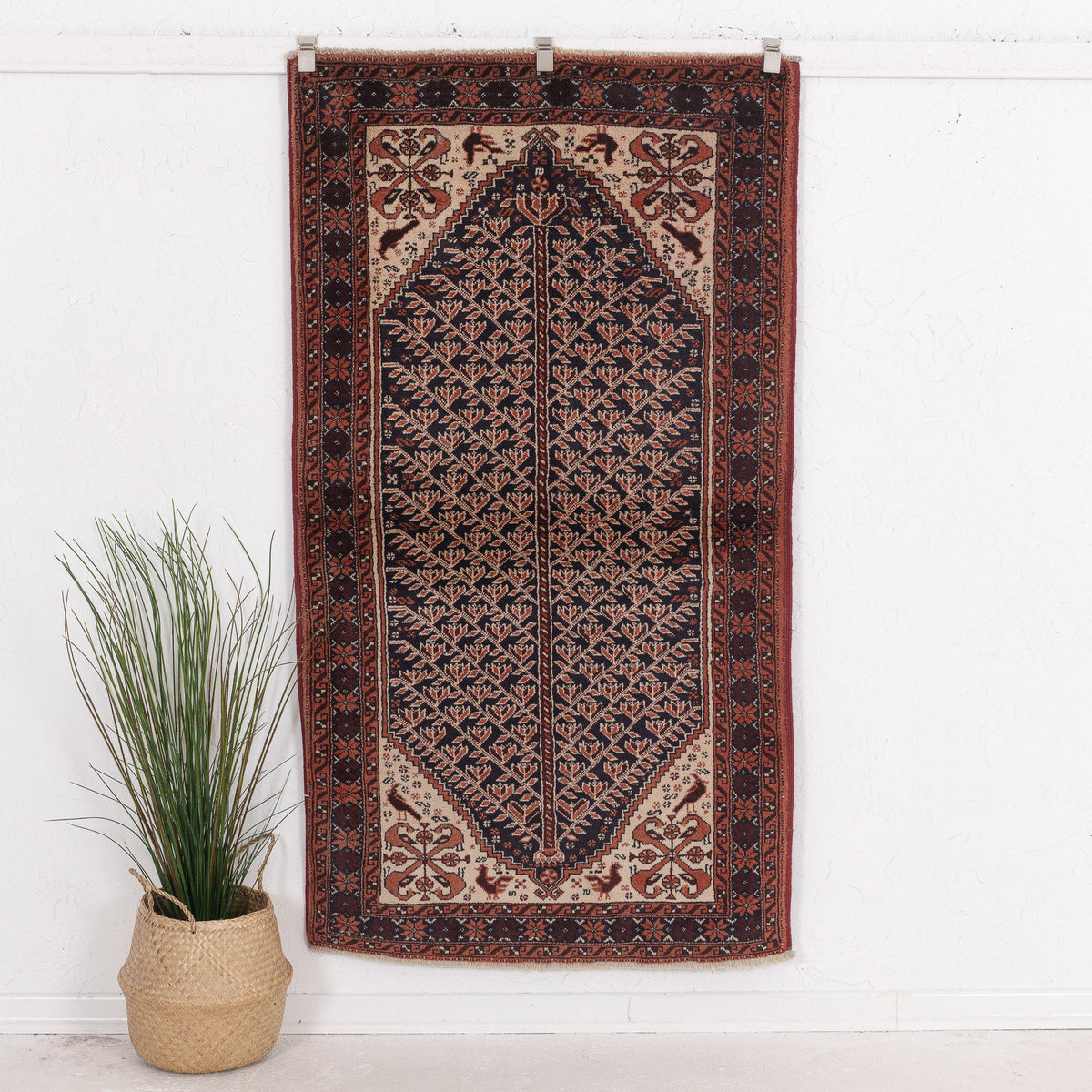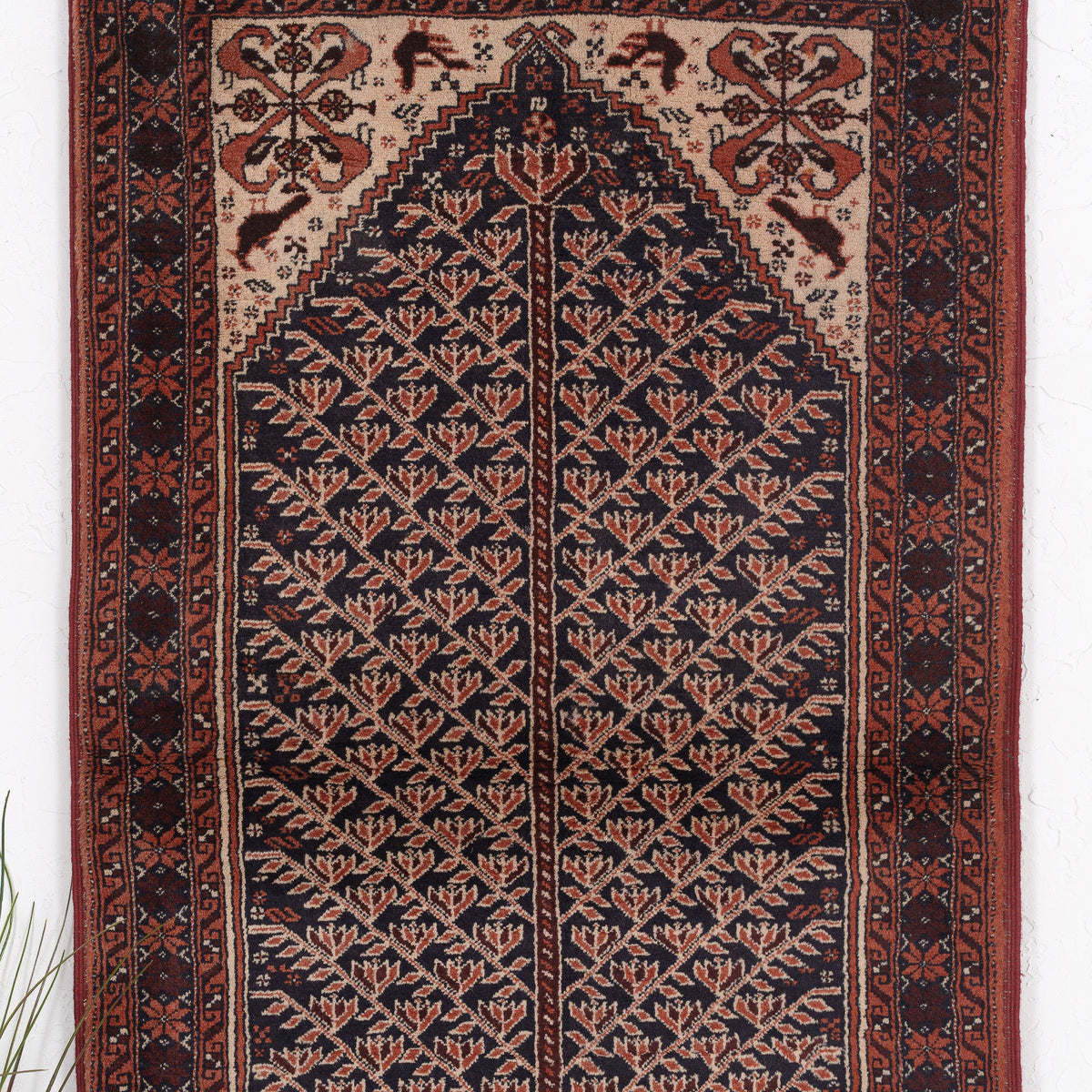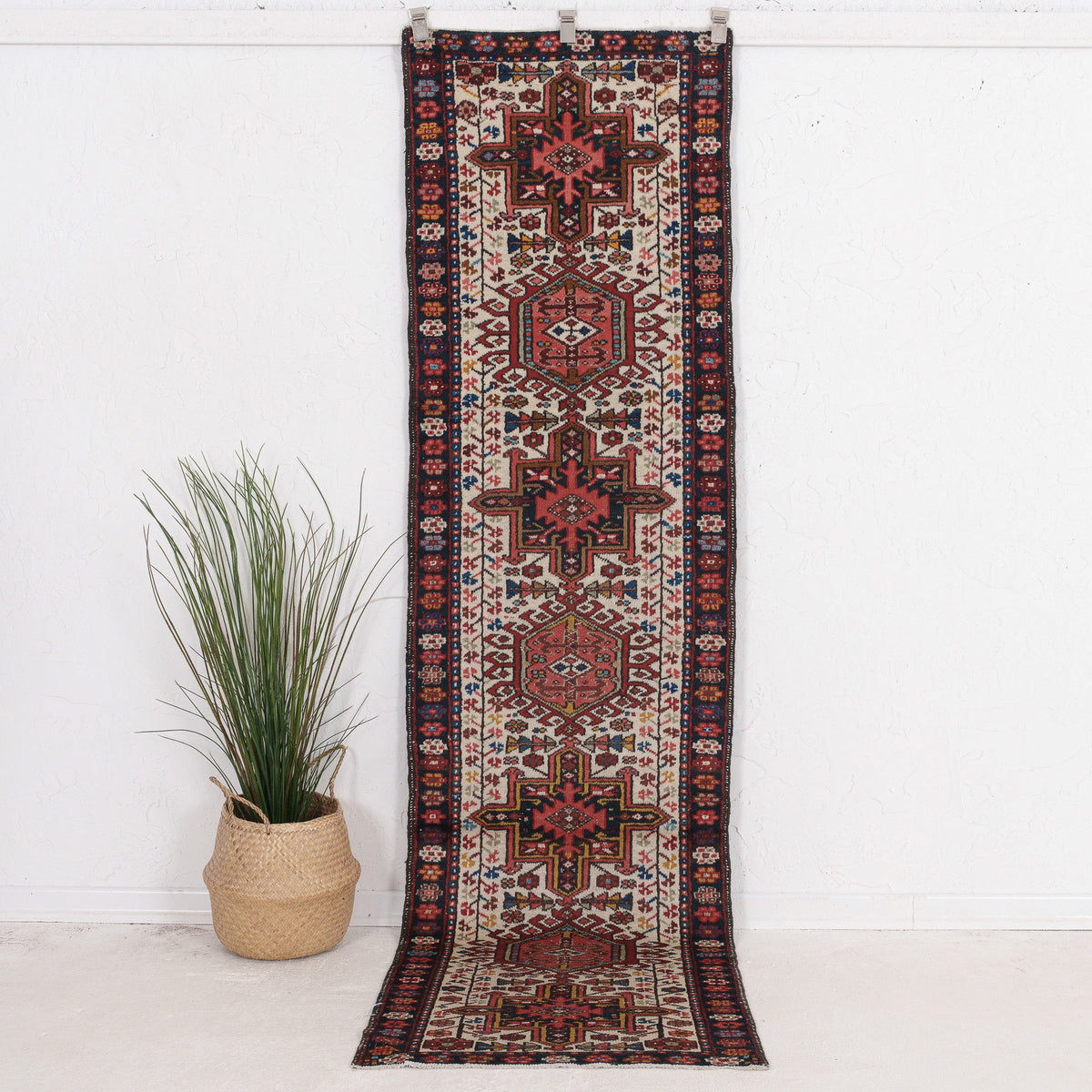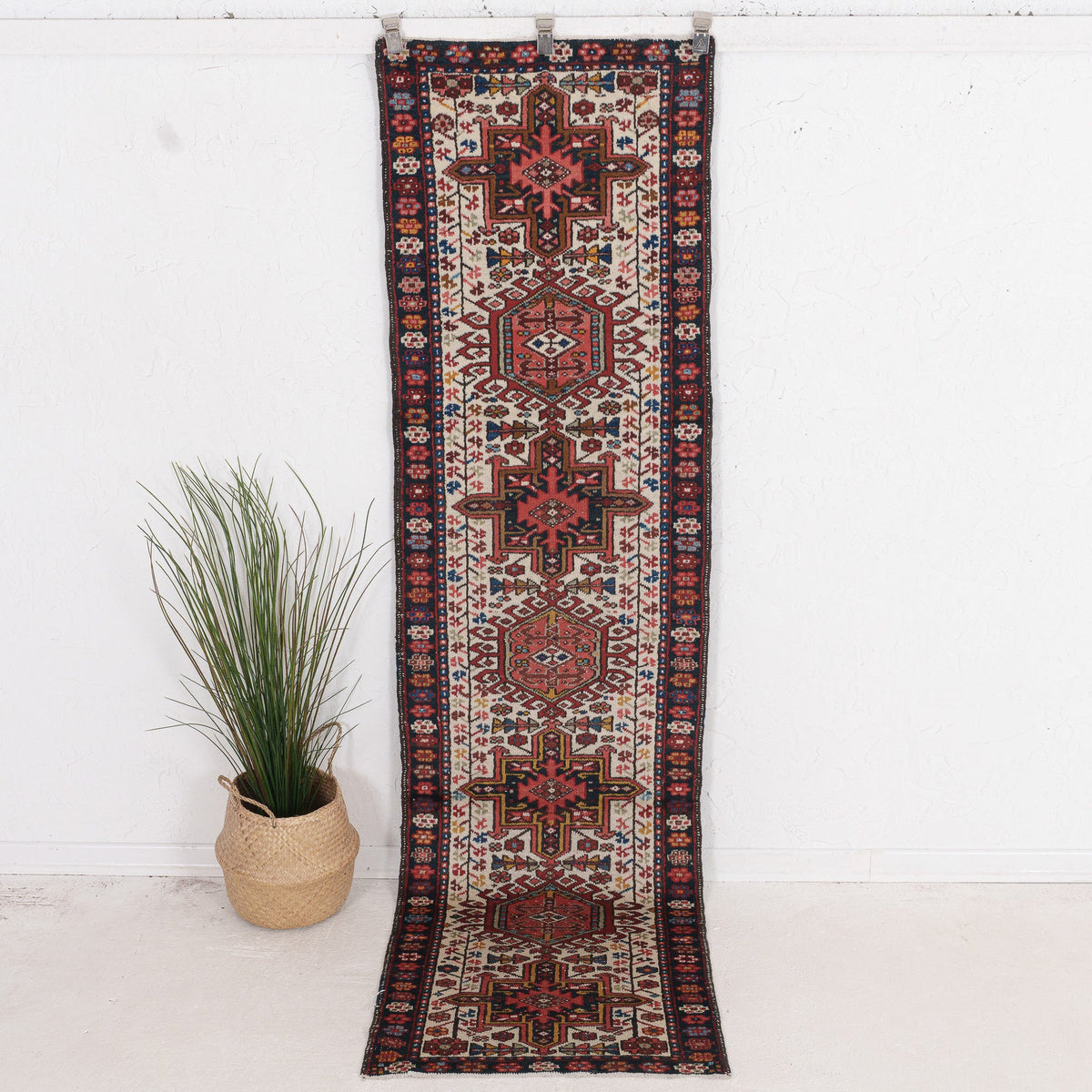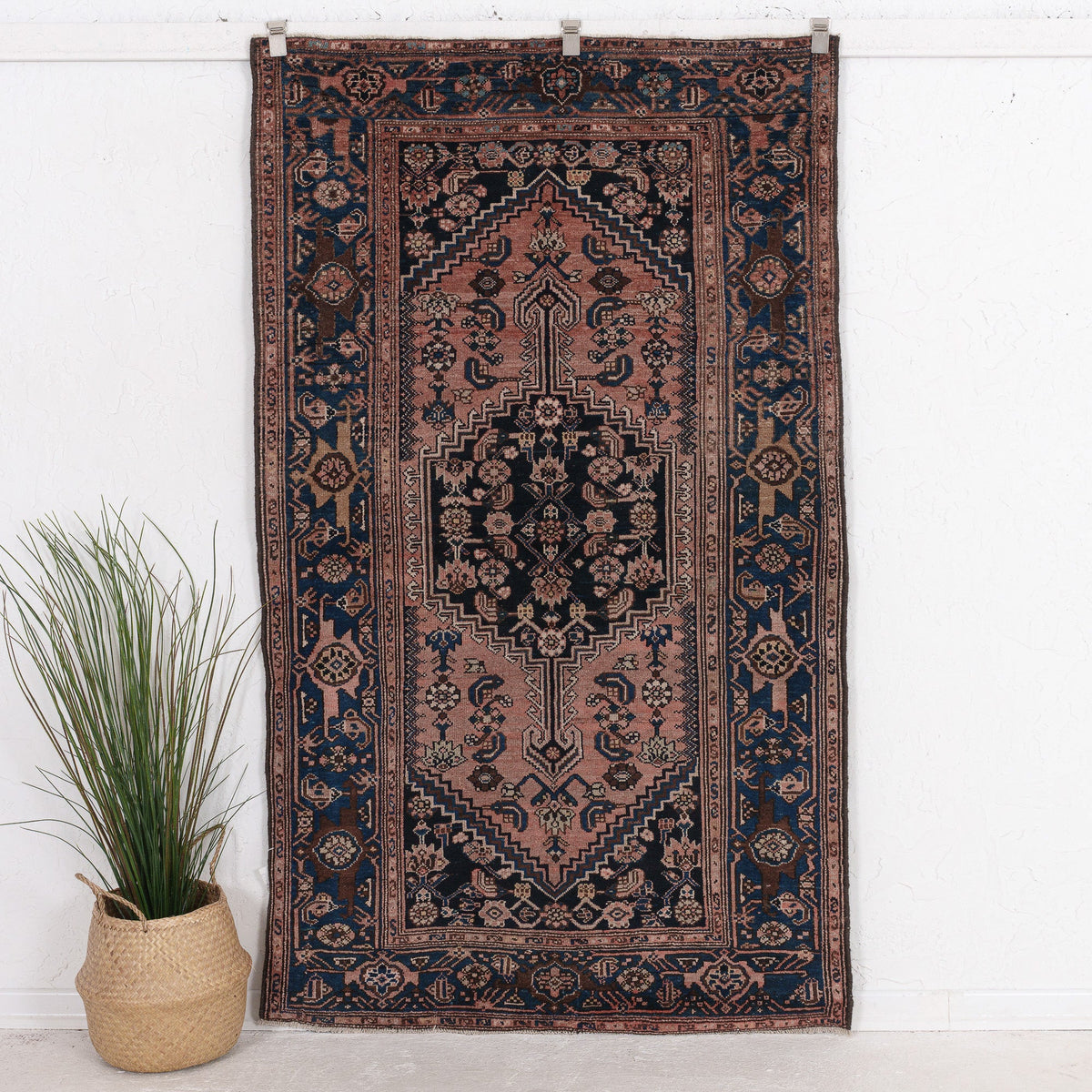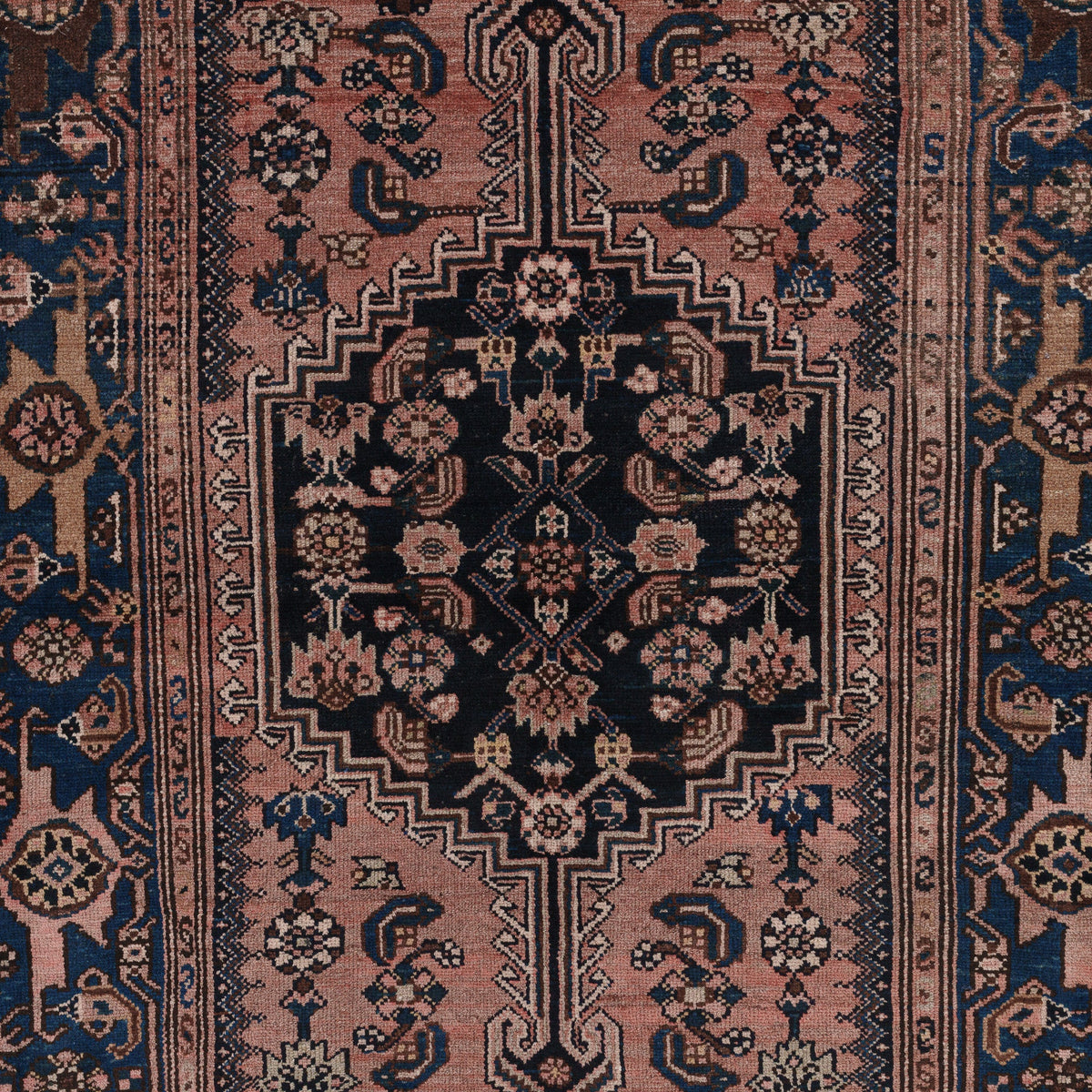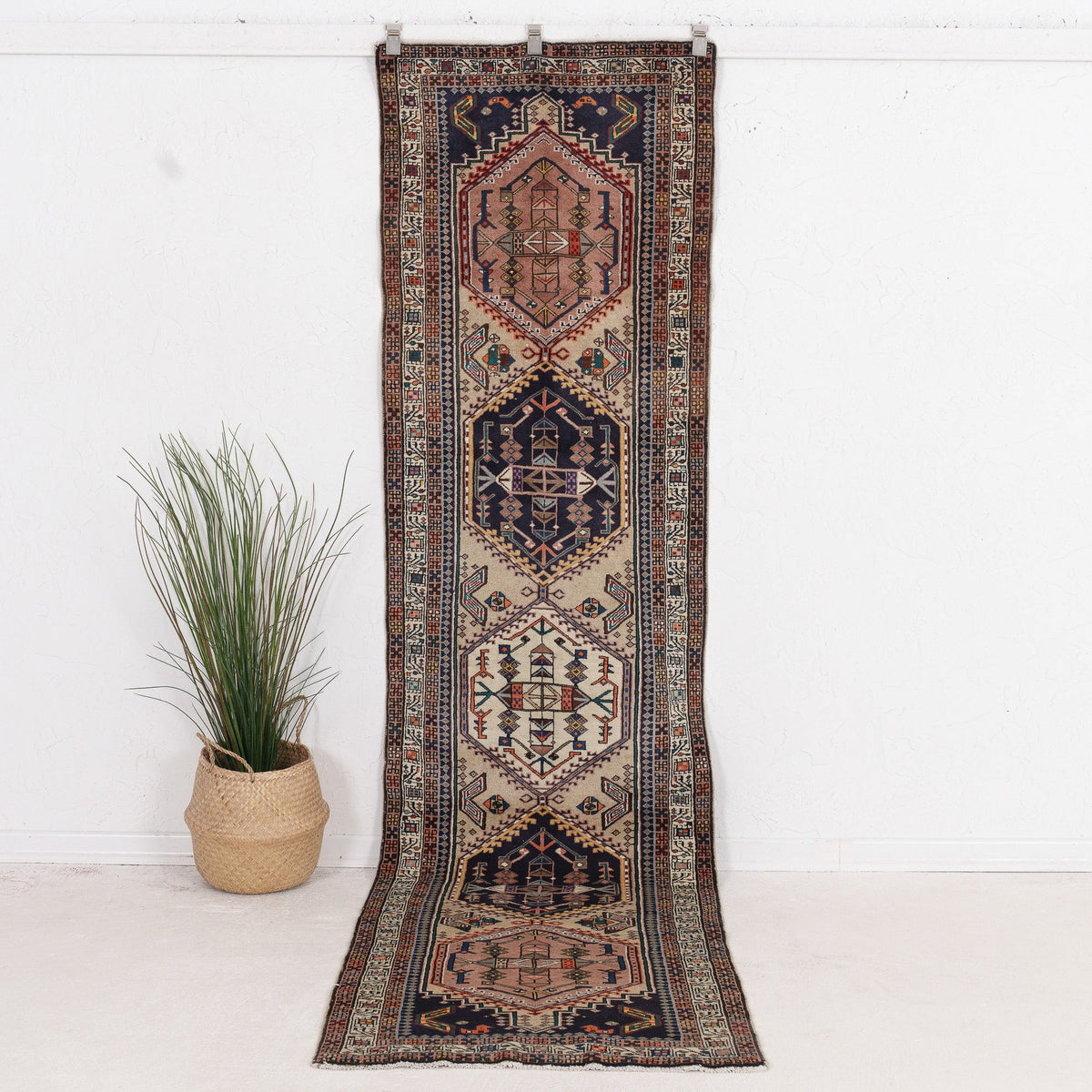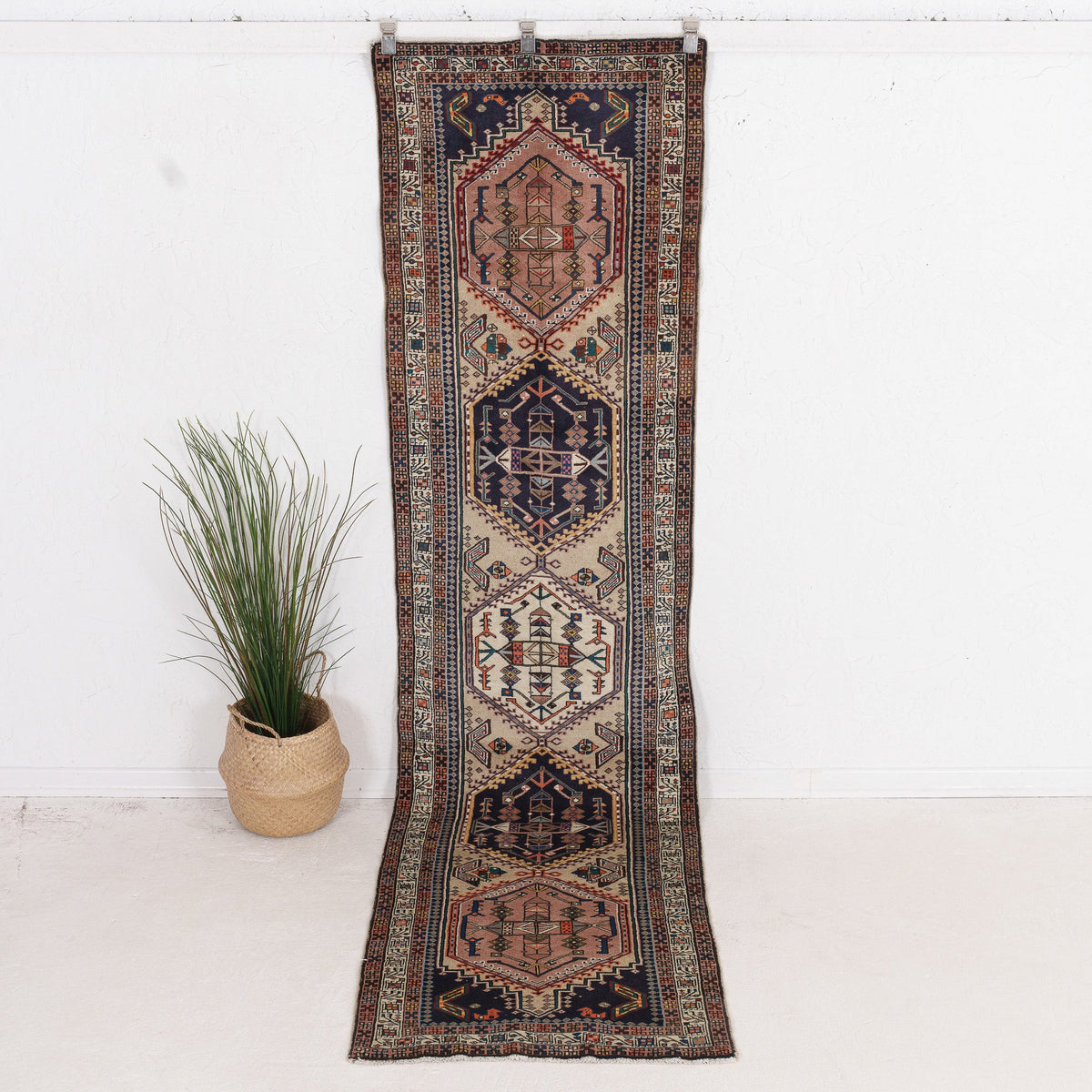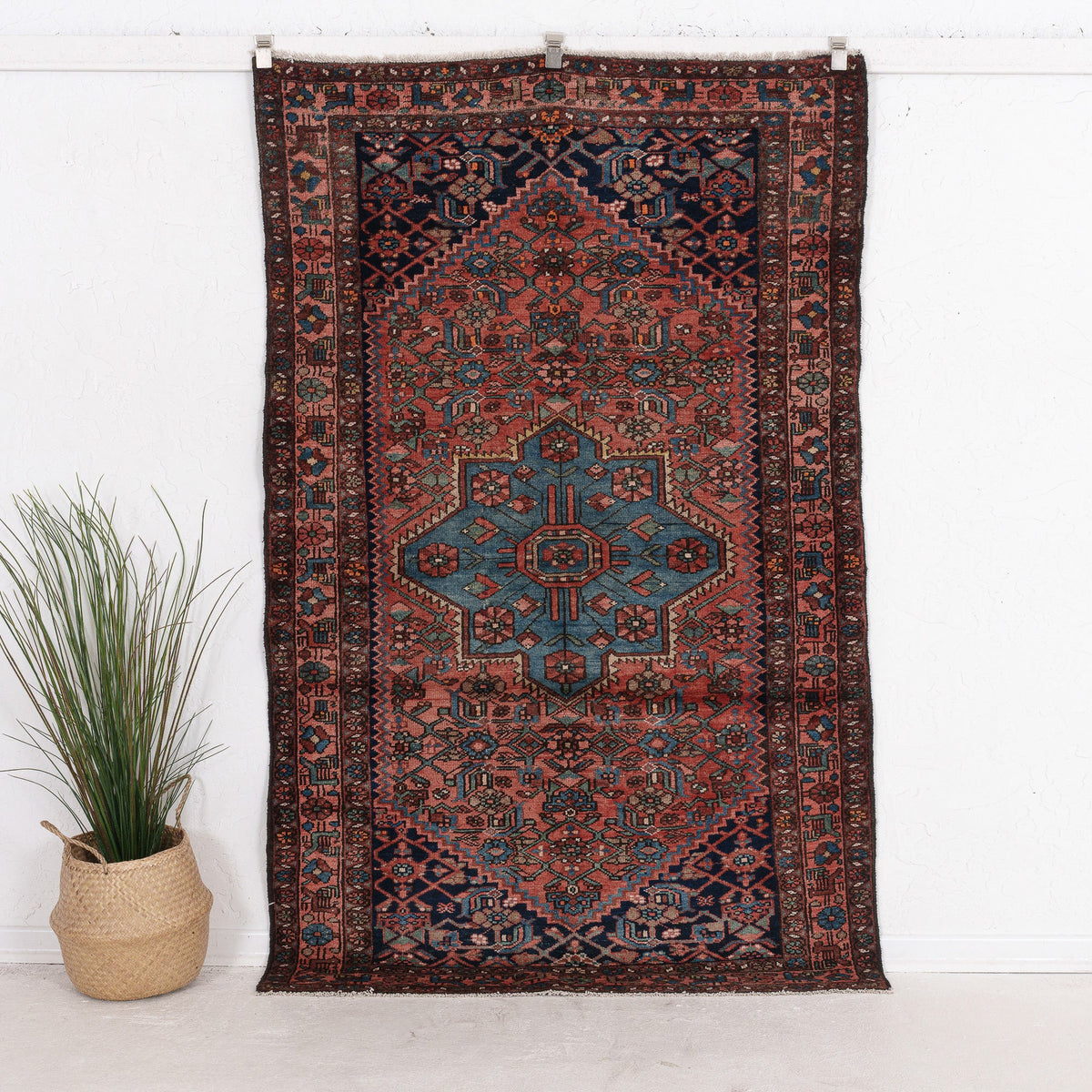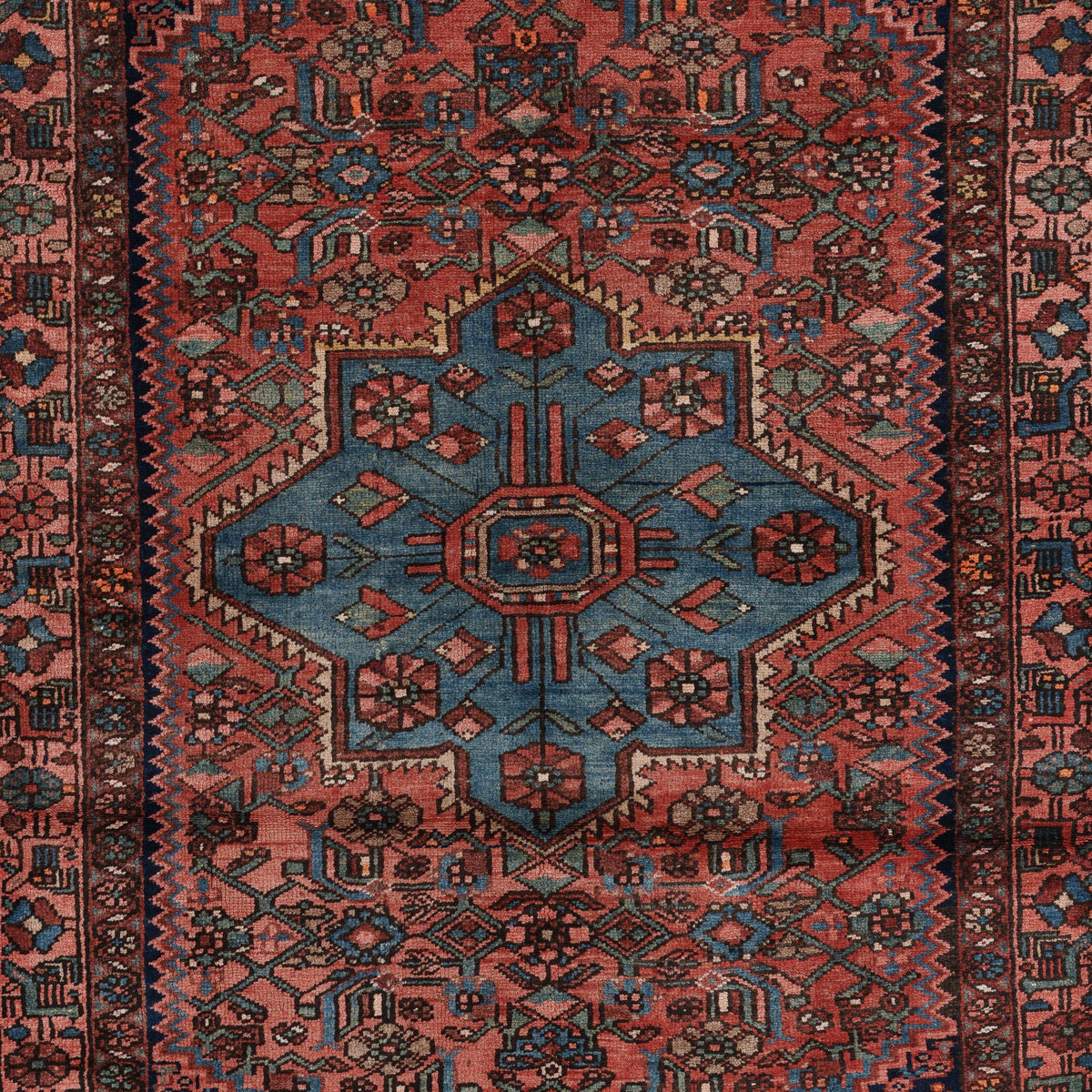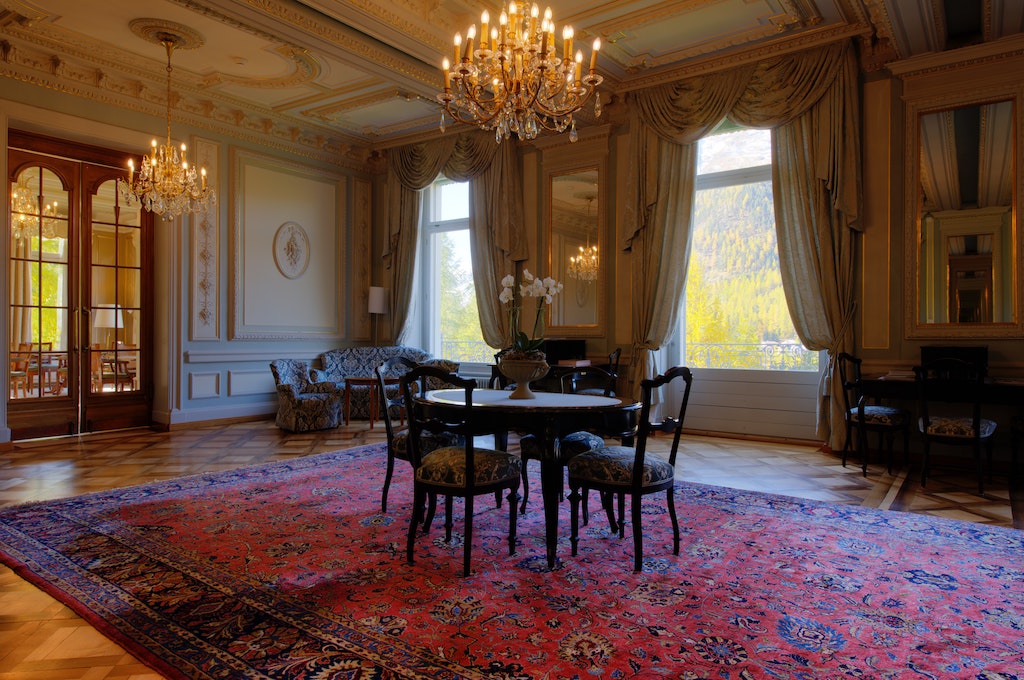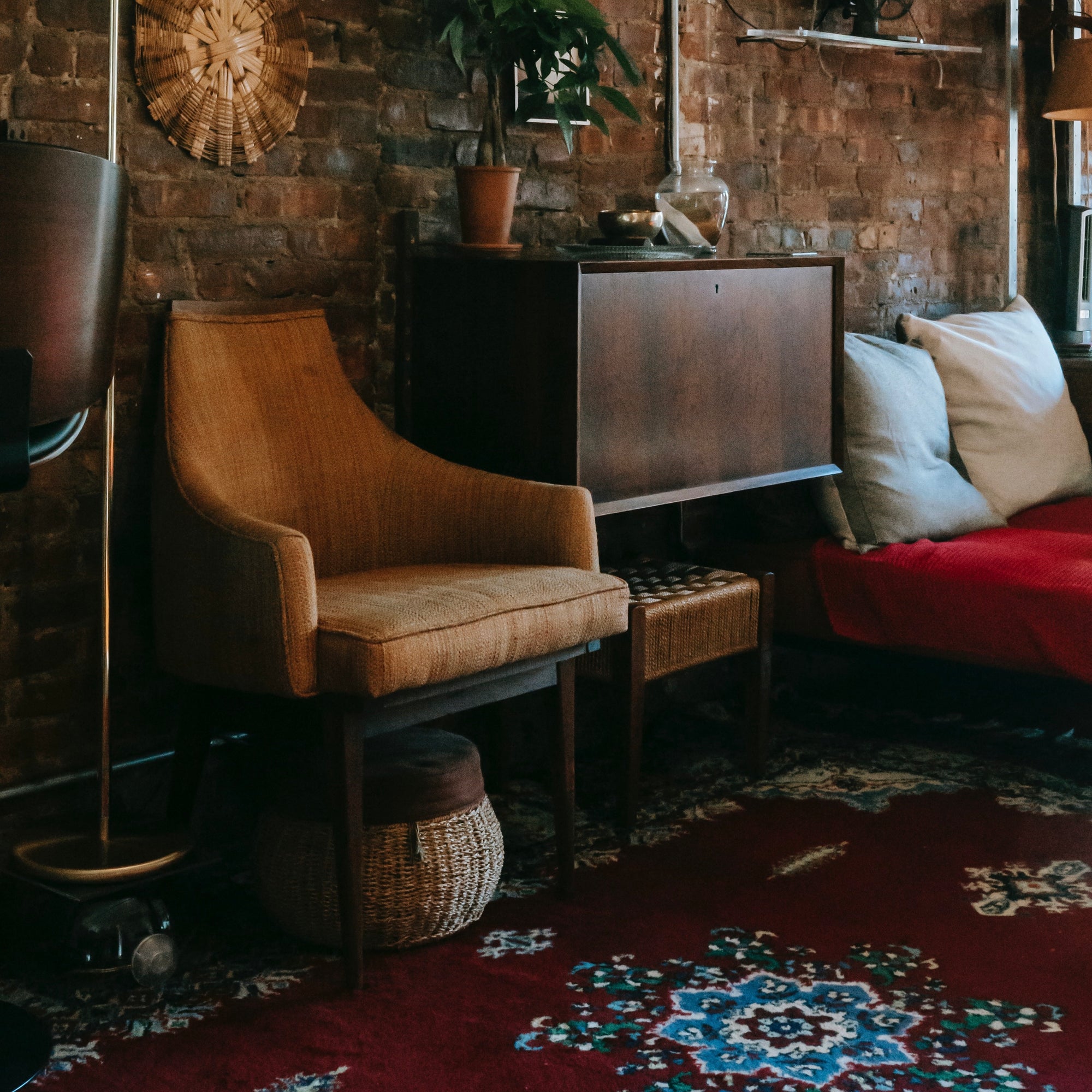Persians have been trailblazers of many things throughout history—from the taxation system to sulfuric acid. One such invention that stood the test of time was the Persian carpet. Persian carpets are one of the hallmarks of Persian civilization. Not just are carpets made with rich raw materials such as cotton, wool, acrylic, and nylon, but they are famous for their eye-catching geometric patterns and floral motifs. Moreover, a Persian rug is highly distinctive and unquestionably unique because of its exquisite floral patterns and knot counts.
So where do Persian rugs come from? Ancient Iranians, primarily Mughals, admired art in many forms—from poetry to murals. With its centuries-old weaving technique, ancient Persian rugs are types of Iranian rugs that got a special place in the world of art and home decoration. Besides their unique geometric designs and vibrant colors, authentic hand-woven Persian rugs are one of the invaluable contributions of the ancient Persian civilization to our society.

Admired for their intricate patterns, rich colors, and unique curvilinear designs, the Persian rugs are a piece of art with exceptional craftsmanship that found their way into the realm of traditional and contemporary interior decoration. The idiosyncrasies of Persian rugs have made them last for centuries and travel across the world and cultures. It's uncommon to find homes and Islamic religious places in many countries without thick, Persian rug-style carpets.
Most people do not know about Persian rugs and carpets because there are different types, colors, geometric patterns, and even unique styles from where they originate. This article will elaborate on everything—from Persian rug design types to how to buy an authentic Persian carpet the next time you shop for one—you need to know about Persian rugs and carpets.
Some of the questions people would like to know answers for, before buying a Persian rug - what are Persian rugs made of? Will it go with the theme of the house? What color would suit best?and so on.

What Is The Difference Between Persian And Oriental Carpets?
It is so easy for people to get confused or lost on how to go about buying the real Persian carpet that they have in mind, given a typical rug selling shop is inundated with many different Persian rug design types and patterns that, sometimes, seem almost impossible to choose what really one wants. In other words, people get spoiled for choice. Besides that, when people go shopping for Persian rugs and carpets, there is always one question that comes up and makes them question whether they really know the difference between Persian and Oriental types of Iranian rugs. Choosing the best, appropriate, and authentic Persian carpet is no mean feat, but there is a lot more to it than the central medallion and intricate patterns that dominate your idea of what a Persian carpet is.
Learn more about Persian rug patterns and where do Persian rugs come from to get a clear understanding of the designs that can best suit your needs!

There is a subtle but important difference between Persian and oriental carpets. To put it simply, all Persian rugs are oriental rugs, as they come from the oriental countries, but not all oriental rugs are Persian except if they are made in Modern Persia (Iran). Oriental drugs are more of an umbrella term for carpets that are manufactured in other Oriental countries, such as Afghanistan, Pakistan, and China.
Why are Persian Rugs expensive and superior to other oriental rugs?
There are a plethora of reasons why most people—predominantly in the western countries—choose Persian rugs over other rugs despite the lesser price and attractive discounts they come with. What are Persian rugs made of? Some distinctive features of Persian rugs that really make the Persian rugs stand out from the crowd are the combination of silk and other raw materials used in the fabrication techniques, the number of rows of knots, and the knot density. More importantly, they are made from natural colors that last for a very long time and retain the same feel as when they were bought yesterday. Natural fibers are among the most commonly heard reasons why Persian rugs are the go-to carpets for decorating homes with a mixture of traditional style and contemporary design.

It is quite clear that quality comes with a price as it takes more time to create something that is versatile and unique. As Persian rugs are known for their versatility and quality, it is common to come across quality rugs that can be anywhere from $800 to thousands of dollars. Even with such a price tag, Persian rugs are still the most popular and favorite types of rugs that millions of people would want to consider when purchasing a high-quality carpet for many occasions and purposes.
Different types of Persian Rugs
!!!!!To choose the right type of Persian carpets for any purpose, one needs proper knowledge of Persian rugs and how they are made—from their history to the manufacturing process. With adequate understanding of how many types of Persian carpets and rugs are available on the market and what they are made of, etc., the process of buying an authentic and high-quality carpet becomes easier and hassle-free.
Persian rugs are the most diversified and antique type of carpets that traveled from the early fifteenth century to the present day, with more advancements in the way they are being made. From village rugs to city rugs, the Persian rugs have a unique history that adds more value to them in terms of quality and durability. Most Persian rug types are classified based on their material properties, city of origin, and other factors, such as the row of knots, bold colors, and beautiful designs.
As some Persian rugs are more suitable for certain weather conditions and utilization, it is essential to understand the Persian rug types before buying the desired Persian design rugs for your home. Here are 18 types of Persian carpets, along with their history, material composition, and patterns that make them suitable for certain types of occasions and usage.
Tabriz Rugs
Originated in the city of Tabriz, northwestern Iran, Tabriz rugs encompass a diverse display of designs from geometric medallions to corner pieces. Tabriz rugs are not a single type of carpet but an umbrella term for multiple types of rugs, such as Tabriz, Heriz, Lackhak-turanj, Afshan, Aghajly, Dord Fasil, and Sardroud. With its spectacular floral designs and tree of life patterns, Tabriz rugs are one of the most popular rugs people from all over the world usually consider as their first choice. Amongst the Persian rug design types,Tabriz rugs are known for their high knot density and concentrated weaving technique.
As Tabriz rugs are beautifully crafted with original, handspun wool and wool pile sourced from northwestern Iran, the durability and quality of these rugs are unquestionably inimitable. Moreover, Tabriz carpets vary in floral motifs, which include teardrop medallions, scenes depicting warfare, hunting, and prominent events from the early fifteenth century and 17th century. Of all the garden patterns and garden motifs embroidered on Tabriz rugs, the Tabriz Mahi is the most fabulous and distinctive, for which many people would love to buy these rugs over and over again.
Heriz Rugs
Heriz rugs date back to the late fifteenth century and are one of the most famous types of persian carpets that exist in this world right now. Being native to Heriz, a village in northwestern Iran, Heriz rugs are easy to spot at any carpet-selling store with their bright colors and simple designs. Moreover, these rugs come with vibrant garden designs and rich knot density, turning everyone's attention to their oversized medallion design in the middle. Heriz rugs always include striking, all-over patterns and a highly distinctive Persian knot. Apart from their beautiful designs, Heriz rugs are the most preferred choice due to their durability and versatility.
Heriz rugs are the only carpets in the world that encapsulate the stories of the Old times in their design. As Persian rugs are designed and woven to tell a story to their viewers, Heriz rugs are no different and always come with scenes and symbols that tell a story or a famous historical event to the admirers.
Kashan Rugs
There are only a few types of carpets in the world that can compete with Kashan rugs in terms of quality, versatility, designs, and patterns. Kashan rugs have a huge advantage over any other persian rug types, and that is their all-over design with distinctive corner pieces and bright colors. One of the most remarkable features that make Kashan rugs one of the best Persian rugs available on the market is the deep blues and reds woven with natural colors and dyes.
The high-quality Persian knot is also one of the subtle things that most people should keep in mind when buying a Kashan rug, as there are many knock-off Kashan rugs available on the market with attractive price tags. Kashan rugs should be on your favorite Persian rugs list for people who want an everlasting Persian rug for multiple purposes and occasions. Kashan carpets have higher knot counts—ranging from 100 psi to over 800 psi, resulting in a subliminal quality and value.
Gabbeh Rugs
As real artisans, Qashqai and Luri weavers in the Zagros Mountains, Gabbeh rugs carry a rich and ancient history since their origin from the late 17th century. This is one of the village rugs that have been in existence for thousands of years. With handspun wool and rich cotton as the main ingredients, Gabbeh rugs greatly influence the buyer. With their thick and concentrated weaving, Gabbeh rugs can be used and passed on to many generations.
Gabbeh rugs feature simple designs, bright colors made of natural dyes, and conspicuous hues and streaks across the patterns and designs. For people with children who want to walk on a warm and luminous carpet that lasts for generations, Gabbeh rugs should be on the top of your list. The timeless appearance and heartwarming colors of these rugs are a perfect choice if you want to decorate your homes with a durable yet highly attractive Persian carpet.
Isfahan Rugs
Traditionally made of premium wool pile and silk, Isfahan rugs have been one of the most preferred types of Persian rugs throughout history. With asymmetrical knots and fleecy texture, Isfahan rugs can make a great addition to your Persian rugs collection. If you're looking for a Persian carpet for a variety of purposes, such as dining with your family, sleeping while watching TV, and praying, Isfahan rugs are the right choice for you.
One of the reasons why Isfahan rugs are more popular in oriental and other parts of the world is that they originate from Isfahan, an ancient city in northwestern Iran. Persian artisans usually create isfahan rugs with higher Persian knot counts and phenomenal quality that adds more beauty and a story to the homes they are brought into. Isfahan rugs' beautiful and intricate patterns are some of the most irresistible features that you would not want to miss out on.
Nain Rugs
From the early twentieth 20th century, skilled Persian artisans pioneered the Nain rugs in the town of Nain, Central Iran. Nain rugs are the very first choice for their smooth and tranquil color palette of ivory and deep blues. Nain rugs add an irresistible touch and attraction to the eyes of your visitors as they are composed of high-quality and soft wool piles with ivory highlights of silk.
Moreover, they are known for their thick, concentrated Persian knot density—ranging from 200 to 800 asymmetric knots per inch. The number of layers of the threads used in these rugs makes it easier for you and anyone walking on the carpets, adding more friction and grip to every step of your way. Although very similar to Isfahan rugs, Nain rugs are easily identifiable by their remarkably luminous ivory colors.
Sarouk Rugs
Sarouk rugs are one of the prominent Persian rugs that minions of people have preferred to decorate their homes ever since the late nineteenth century. Sarouk rugs are made with a fine, compact weave and are known for their brilliant colors, patterns, and floral motifs. What makes these rugs more special and preferable than certain types of Persian rugs is that they have mellow shades and medallion designs that are as striking as any carpet could possibly get.
Sarouk carpets are woven with the most skillful craftsmen in both traditional and contemporary designs. These Persian rugs are highly celebrated for their eye-catching and elegant center medallion motifs. With more than 250 knots per inch, Sarouk rugs are undoubtedly one of the most durable Persian rugs for their price. If your home is large enough to accommodate a broader Persian carpet and if you want to add more weight to your antique rug wardrobe, you now know what you should buy. Moreover, Sarouk rugs are the least expensive type of Persian rugs and are known for their asymmetric designs and lively colors.
Mashad Rugs
Unlike other Persian rugs, made of completely wool pile or cotton, Mashad rugs are crafted with wool and cotton. These rugs are famous for their traditional designs and softness that would make you feel the luxury every step you take and every time you touch them. Mashad rugs are easily identifiable with a large and beautiful central medallion that gets you awestruck every time you look at them. The quality of the wool used to make these Persian rugs is second to none.
Baluchi Rugs
If you're in search of Persian rugs but with smaller sizes and unique geometric patterns, Balochi rugs should be the perfect choice for your needs. With the lively patterns in the middle and corners of them, Baluchi rugs have a huge fan base when it comes to home decoration. As these rugs are usually created with a capturing color palette, you're not going to easily pass by them without considering whether you should buy them now or later. Plus, your furniture and flooring get a new look with these rugs as they are compact in size and attractive to everyone's eyes.
The warp of this type of rug is made of wool or a mixture of wool and goat hair, making them durable and resilient to harsh usages. Most importantly, as they are small and compact in size, these rugs are mostly used as prayer mats in Pakistan and the Middle East. Thanks to their size and density for an easy cleaning and dusting process.
Qum Rugs
Unlike other types of Persian carpets, which are mostly ancient, Qum rugs are relatively new to the world of Persian rugs. Only in the late nineteenth century, Qum rugs started to take significant prominence in Iran and other countries. Artisans who make these rugs incorporate a wide range of styles and floral motifs to ensure every carpet they make stays at the buyer's home for a very long time without any major wear and tear. What makes Qum rugs more durable than other carpets in the same price tag is the quality of silk used to weave them.

The technical production of Qom rugs is almost similar to those of any other Persian rugs. This type of rug is recognized for its finely-woven, authentic silk rugs with over 1200 knot counts. Owing to a lack of previous weaving tradition in the city of Qum, Central Iran, Qum rugs were actually inspired by other Persian rugs, such as Tabriz, Kashan, and Mashhad. Most of the designs embroidered on the surface contain floral motifs and curvilinear patterns.
Bakhtiari Rugs
As the Bakhtiari tribe crafts Bakhtiari rugs in west-central Iran, these rugs predominantly incorporate tribal motifs, garden patterns, and awe-inspiring colors. With a paneled medallion at the center, Bakhtiari rugs are, for sure, the best Persian rugs that anyone who loves and knows the value of Persian carpets would not want to think twice before purchasing them.
Most Bakhtiari rugs have a rich domination of reds and deep blues when it comes to colors and designs. Bakhtiari rugs are one of those rugs that are woven with Turkish knots and high-quality, glossy wool combined with cotton. Furthermore, Bakhtiari rugs possess single or double wefts. The most commonly designed and embroidered designs in Bakhtiari rugs are floral motifs, landscape features, famous historical figures, Quran verses, and vine patterns.
Bijar Rugs
Due to their heavier, firmer, and sturdier than any other Persian rugs had ever produced, Bijar rugs are known as "The Iron Carpet Of Iran." The double wefts and thick Persian knots make these rugs more desirable, especially for the occasions and places frequented by many people. The heaviness is one of the hallmarks of Bijar rugs that no other Persian rugs are known for. Bijar rugs are the best choice when it comes to carpeting a sumptuous living room or a big prayer hall.

Craftsmen tightly beat down a thicker weft between multiple rows of knots to make these sturdy and hard-wearing rugs. By weaving the pile out of cotton and wool, including camel wool, the craftsmen craft the foundation for Bijar rugs. Given the quality of the wool pile used in making these rugs, durability is not something that needs to be emphasized here. Bijar rugs can be the easiest pick for their unique patterns and hues when you want to carpet your room with smaller and bigger Persian rugs.
Farahan Rugs
Farahan rugs are among the most antique Persian rugs that are still made in today's Iran. Ferahan region of West Central Iran as the place of origin, Farahana rugs combine a variety of tribal and village Persian rugs with distinguishing and curvilinear designs. A typical Farahan rug is produced in two different styles. One is Farahan Sarouk and the other is Farahan. There are some artisans who combine both the styles as mentioned above and make a new, unnamed style that the locals of the Farahan region mostly use.
Due to various unique features adopted by Farahan rugs, they are one of the unique antique rugs that set themselves apart from other kinds of rugs found in Iran. One can see the originality and innovative idea of the artisans in the floral motifs embroidered on these carpets. Most of their intricate patterns and glowing midnight indigo grounds are very distinctive from any other Persian rugs. These rugs are often adored for their creative, unconventional borders, especially those that come with unique celadon and apple green hues, coupled with the edges that look like a handkerchief.
Kerman Rugs
The popular traditional Persian rugs always include Kerman rugs as one of the most beautiful and antique rugs that are still made by hundreds of manufacturers across present-day Iran. Kerman rugs are mostly designed with a medallion at the center and floral motifs at the corners. Most antique Kerman rugs have floral, animal, historical moments, and tree designs. However, the modern, contemporary Kerman rugs import a wide variety of simple floral motifs across the entire carpet.
Lavar or Ravar Kerman is the distinct type of Kerman rugs that have been traditionally produced in the city of Kerman in northwestern Iran. These rugs are known for their elegant, classical, and idiosyncratic designs. Moreover, the one extraordinary feature that makes these rugs stand out from the crowd is that they always include a signature of the weaver or the person for whom they were specially made, making them a memorable gift on various occasions.
Kilims Rugs
As they are produced without a knotted pile, Kilims rugs are among the best among the antique rugs with a flat weave rug. Due to their ancient weaving techniques, these rugs are considered to be the most primitive Persian rugs compared to other Persian and Oriental rugs. Kilims are predominantly used for decorative and prayer purposes in many Western households. As they are made of simple interlocking strands of wool and other rich fibers, Kilims rugs are considered to be the best Persian rugs in terms of durability.
The simple and bold geometric patterns make it easier for people to spot these rugs easily. Most Kilims are made from 100% wool and vegetable dyes. Surprisingly, Kilims rugs are usually inexpensive, which makes it easier for them to find their way to many homes for many reasons, such as the time a weaver takes to weave them and the flatweave methods.
Malayer Rugs
The rich floral and other types of motifs make antique Malayer rugs highly irresistible and interesting. Malayer rugs are known for their motifs because the motifs that are embroidered on the rugs are more than just random designs but an allegory of many philosophical things. Images of stylized birds, flower heads, and vine patterns are the most commonly found designs in the Malayer rugs.
Malayer rugs are famous for their all-over field designs and central medallions with deep navy blue colors in the field area. These rugs are specially made of a lustrous, supple, resilient wool pile in the village of Mishin by ethnic Iranians. Persian weavers believe that most of the designs and weaving techniques were actually inspired by Farahan rugs and other Persian rugs.
Senneh Rugs
Most Senneh rugs knotted by the Kurdish community in Iran are coarse rugs that are perfect for day-to-day use. As one of the undeniably robust and durable Persian rugs, Senneh rugs are adored by many Persian carpet lovers. Among the motifs used in the Senneh rugs, the Herati pattern or the boteh are the most common. The rich Persian knots and high-quality raw materials used to make these durable, hard-wearing carpets elevate the durability of these rugs.
Dark blue and red dominate their presence in almost every Senneh rug when it comes to colors. These rugs come in a variety of all-over patterns with huge central medallions. Moreover, Senneh rugs display precise, sharp geometric patterns that align with other elements such as color and wefts. As known for their scatter-size and decorative properties, Senneh rugs are the best choice when it comes to carpeting big households and offices.
Sultanabad Rugs
Since the early 20th century, antique Sultanabad rugs have been the most desirable rugs compared to other Persian rugs with similar material and design characteristics. Mostly renowned for their monumental size and second to none grandeur, these rugs are designed and produced with the finest decorative elements by the most skillful artisans in present-day Iran. Due to their highly attractive elements, Sultanabad rugs are the first choice that comes to mind for many interior designers and home decor enthusiasts.
As the name suggests, Sultana rugs come from the area of Sultanabad, now known as Arak, Central Iran. Due to their antiquity and rich history, Sultanabad rugs are one of the most expensive Persian rugs in many countries, including Iran. Sultanabad rugs are very spacious and have unique variations and patterns, such as repeated diamond and curling leaf. The sophisticated and contemporary visual impact of Sultanabad rugs comes from their field, which is usually colored in ivory, rose, blue, and gold.
Persian Rugs—The Rugs From The Past That Are Made To Last.
Finding the right, authentic Persian rug is no mean feat, but the journey to find one shouldn't be rushed. Now that you know more about the different types of Persian carpets available on the market, it would be easier for you to get the most suitable Persian rugs for your home. Remember that every penny spent on buying the best Persian rugs is one of the best investments as they retain a strong resale value, plus they last for generations.
With millions of silk rugs and different types of rugs sold and exported every day from present-day Iran, Persian rugs have evidently entrenched a place of great admiration and desire to buy them without thinking of any other types of rugs available on the market. The popularity of Persian rugs has always been on an upward trend because they come with a great deal of versatility and designs that no other types of rugs in the world had ever been able to capture everyone's heart at very first sight.
If you are still wondering, “Are persian rugs expensive?” but would still like to infuse the element in our house design, call us right away. We will help you out!

